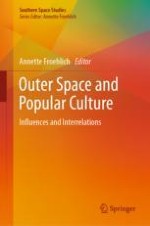2020 | OriginalPaper | Buchkapitel
15. The Space Activities of Animals in African Fairy Tales in Light of International Space Regulations
verfasst von : Annette Froehlich
Erschienen in: Outer Space and Popular Culture
Aktivieren Sie unsere intelligente Suche, um passende Fachinhalte oder Patente zu finden.
Wählen Sie Textabschnitte aus um mit Künstlicher Intelligenz passenden Patente zu finden. powered by
Markieren Sie Textabschnitte, um KI-gestützt weitere passende Inhalte zu finden. powered by
